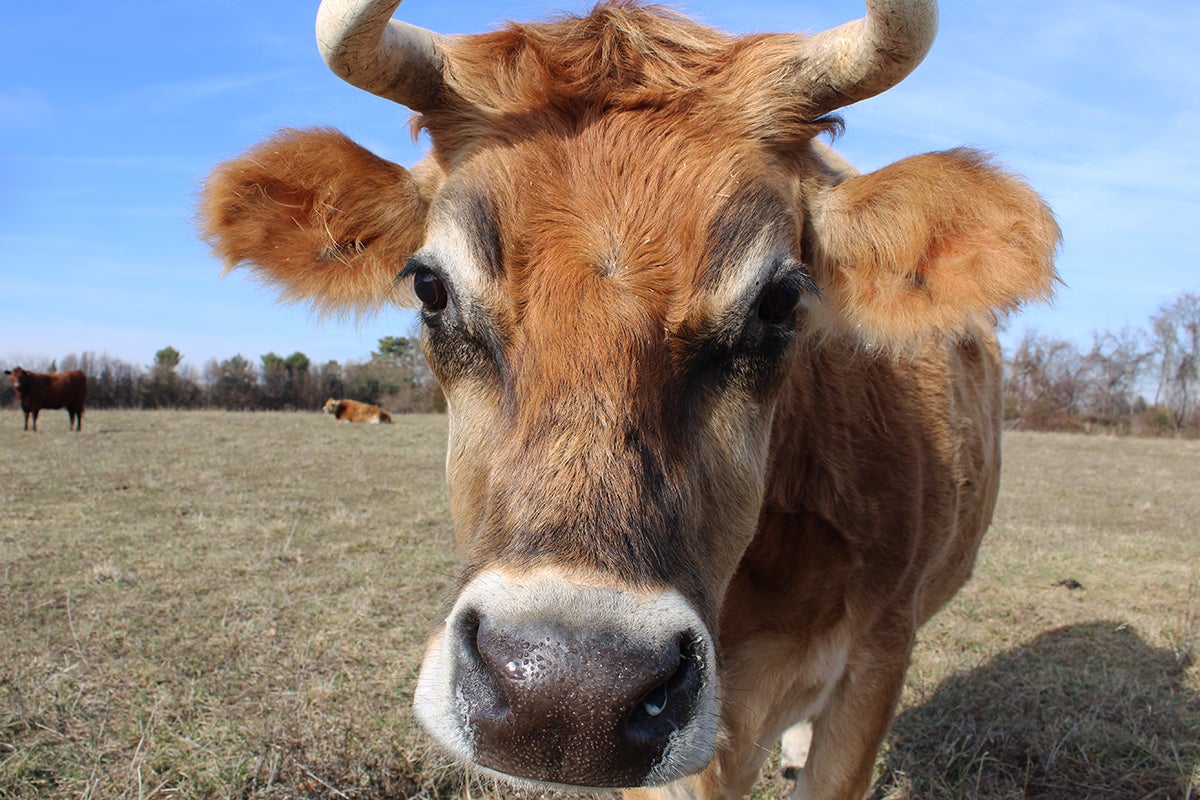
From Philly and the Pa. suburbs to South Jersey and Delaware, what would you like WHYY News to cover? Let us know!
It was an apocalyptic scene that greeted Helga Tacreiter one morning in 1988 when she came out to feed the cows.
Strewn across the field were dead cows on their backs, legs in the air. Lightning had struck a tree nearby during a strong spring storm the night before. The bolt traveled along the ground, killing most of the herd.
It wasn’t the first time that Tacreiter, who was then a minimum wage farm worker, had to face the death of a beloved animal. When she first started working at a dairy farm in southern New Jersey in 1975, she befriended one of the cows she milked every day. The cows in that farm had numbers instead of names. This one was number nine. “Nine” was feisty, and teased Tacreiter by pulling out the various cords used to milk her.
But when the cow was no longer able to get pregnant, Nine had to be sent to the slaughterhouse.
“I just had to kiss her goodbye. And so that was the first cow that I fell in love with,” Tacreiter said. “And I thought, well, there’s nothing I can do. I mean, there’s 100 cows here, and each one of them is one day not going to get pregnant.”
But her acceptance of the cows’ fate changed that fateful day in the field, Tacreiter said, when she noticed six small calves huddled near the devastating scene. Upright and alive, they were still trying to nurse from their dead mothers.
“I took those six calves. And I said, ‘If lightning didn’t kill them, man is not going to kill them either,’” she said.
And so The Cow Sanctuary in Bridgeton, New Jersey, was born.
Building a home
At the time, Tacreiter was making $5 an hour working on a farm. After three years, she had scraped and saved up the thousands of dollars needed to buy the calves from the owner.
Following a temporary stay in an empty tomato packing house, Tacreiter looked for a permanent place for her herd. A woman who owned the farmland where the sanctuary now stands decided to sell it to Tacreiter in 1993. The owner accepted a second mortgage from the bank in place of a down payment, over the objections of her family.
“She wasn’t a vegetarian or anything,” Tacreiter said. “She just thought [that] … I was pretty heartfelt about it.”
It was just the first of what Tacreiter described as a series of “miracles,” which enabled the sanctuary to come to life.
The “second miracle” came after the end of a romantic relationship endangered the mortgage. A kind couple who wanted to save a cow for their children ended up stepping in and cosigning Tacreiter’s mortgage when her ex-boyfriend departed.
“‘Our attorney told us we were out of our minds, but we don’t care,’” Tacreiter remembers them telling her over the phone. “‘We’re going to do it. Where would you like us to show up to sign?’”
Tacreiter then saved the couple’s cow and the rescue lived out the rest of her life at the sanctuary, visited occasionally by the couple and their young girls, who are now in college.
